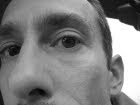So I’ve been drawing a bit lately. I don’t consider myself
particularly talented when it comes to “art,” at least with respect to graphic
art, but I certainly appreciate art
and design. I bought a 9 x 12-inch sketch pad of 60 lb. fine-toothed paper, and a
bunch of other stuff (new compass, erasers, protractors, straightedges, etc.) from
Michaels a few months ago. I’ve been
drawing mostly with a compass and straightedge; variations of overlapping
circles grids, i.e. flowers-of-life,
Metatron’s
Cubes, et cetera.
 |
| This kind of thing. |
There is something very relaxing about drawing with
mechanical pencils (primary weapon of choice is a Pentel P205, 0.5 mm), and there’s something compelling about geometry,
particularly “sacred”
geometry. I’m not—and never have been—talented mathematically, either, but
I can easily see how the universe (as we perceive and understand it) can be
interpreted through math. All one need do is look at the fractal branching of a
tree, or the curve
of a nautilus shell, or the Mandelbrot-set-beauty-ad-infinitum of a Romanesco Broccoli head, to see it play out. Or one can look to more ephemeral things:
the Brownian motion of white cream poured into hot, black coffee, the swirling
and rolling and rising curls of beige; exhaled cigarette smoke or wisps of hot
breath in the winter; the sinusoidal crests and troughs of lake- or sea-waves
lapping or crashing onto shore; the invisible
ellipses of the planets’ or satellites’ orbits . . . it’s everywhere,
really. Math is an esoteric and occult language to me, but no less compelling
for that. I admit it’s a little bit like knowing a few words in a foreign
language—in this case, a language that is inherently magical.
The things I’ve been drawing are really variations of the
themes mentioned above; iterations of overlapping circles, and as I’ve been making
new drawings, I’ve been slowly increasing the complexity, sort of testing the
limits of what I can do. A lot of it, more recently, has been inflected by the
additional motif of the four (or five) classical elements (again, depending on
which tradition one is aligning with) of air, fire, earth, and water (and
sometimes “æther” or “spirit” or whatever). I’m not religious, and in fact I
consider myself an atheist, but the symbology resonates with me. The
ontological / cosmological / epistemological questions we all have are
ever-present and the world and everything in it are manifestations of the
questions, and at the same time, partial answers to those questions.
The universe is, simultaneously, mystery and revelation.
I sit at my desk and draw, stepping out circles,
circumscribing questions, demarcating answers. The pencil makes a satisfying
scrape across the paper when traveling along a straightedge connecting
vertices, and a soft shushing when shading in a section.
My father was really good at math—he was an Engineer working
for the Long
Island Lighting Company (subsequently LIPA, KeySpan energy) for most of my
childhood. He was involved in the design of the Shoreham
Nuclear Power Plant, and took me there as a child to see it, both during
construction and later, when it was undergoing initial testing. It was as cool
as you might imagine.
 |
| Robert Sherwood (dad) at Drawing Board |
I have his old drafting materials now; high-end German
compasses, triangles, an eraser-shield, a slide rule, Vernier calipers (not
quite a drafting tool, admittedly),
all sorts of stuff. He taught me to use a compass when I was ten or so. I
remember him guiding my hand, showing me how to draw “flowers” using the
compass, stepping out the angles of the circle using its radius, then
connecting the six sections with arcs. I remember my amazement at how . . . exact it was, and how elegant.
 |
| One of dad's compass sets. |
That was a beginning, a brief moment of satori, a little flash of insight. It was a seed, a spark, an
exposure, illuminating that which lies behind or under the plain truth of things.

No comments:
Post a Comment